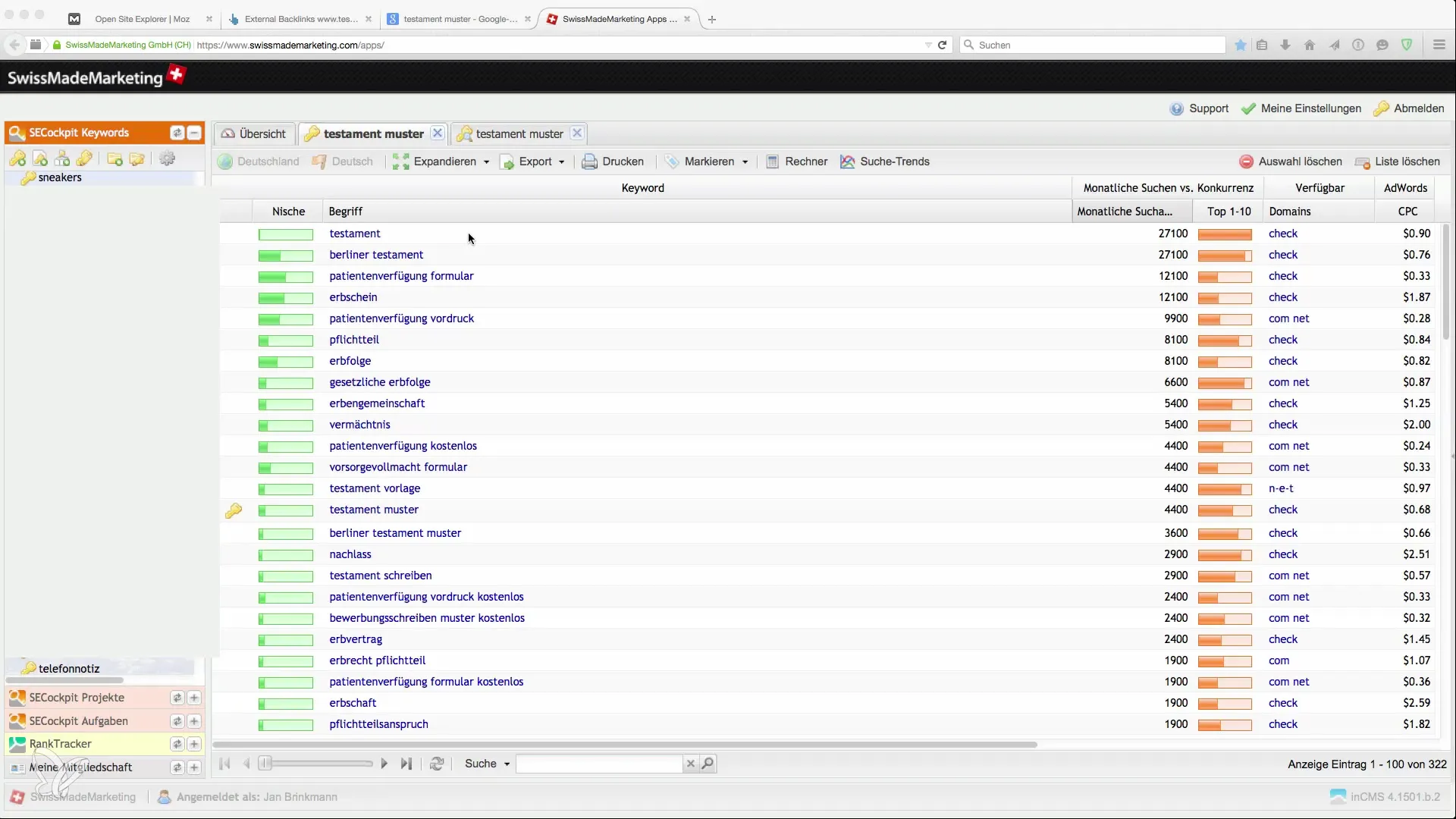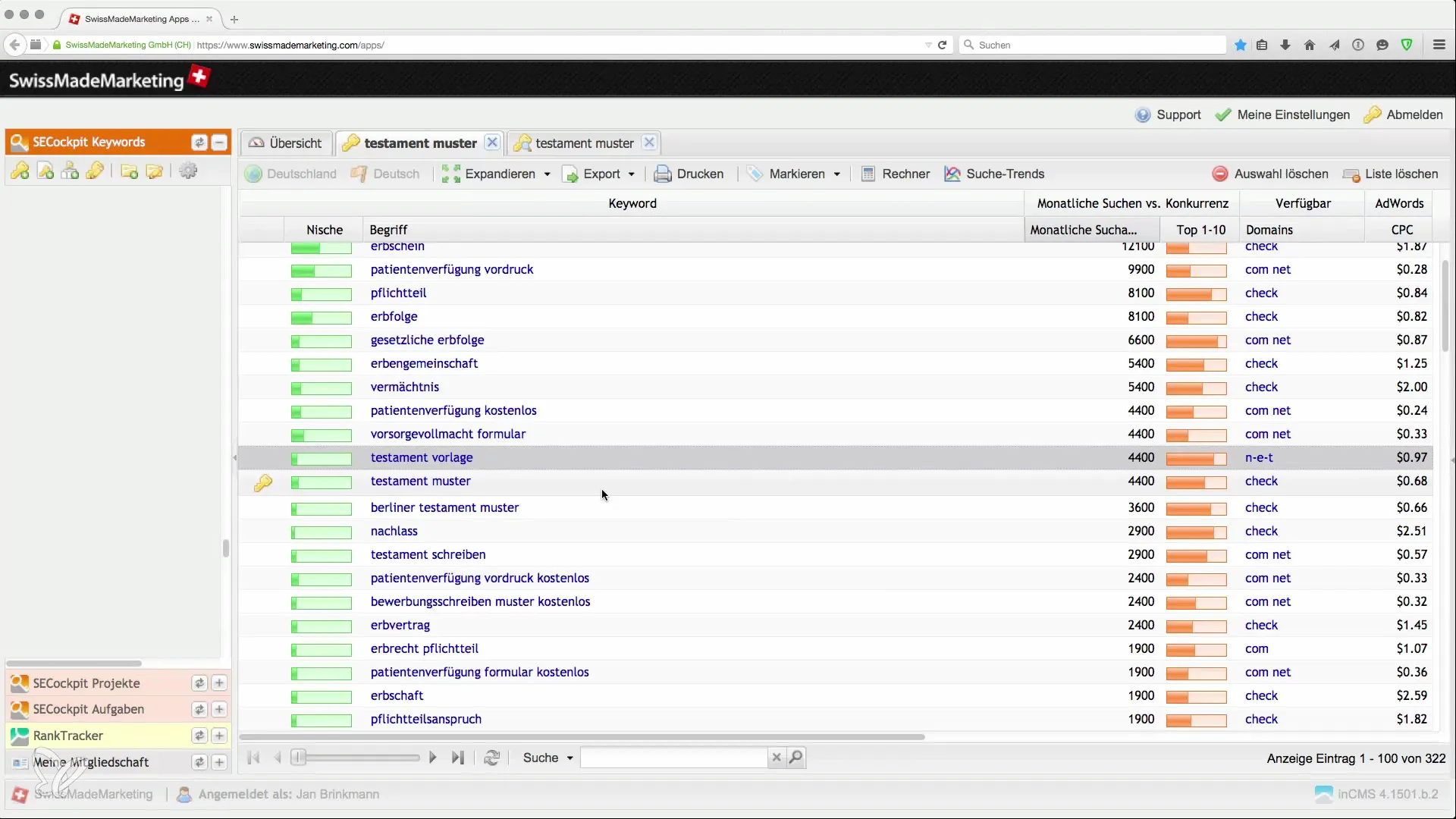Search engines are the gateway to the digital world. If you know what users are searching for and what their intentions are, you can optimize your online offerings accordingly. This article focuses on interpreting keywords, especially regarding users’ download intent – a critical factor for increasing your visibility and click-through rate.
Key Insights Choosing the right keyword is not only important, but also the underlying user intent. By better understanding user searches, you can provide content that meets their needs and enhances their interaction with your offerings. Keywords with a clear download intent are especially valuable as they indicate a direct action.
Step-by-Step Guide
1. Understand User Intent
Before you start keyword research, it is important to understand the users’ intent. Is there a clear download intent, or are they looking for information? When someone types in “will,” it could have many meanings. The user might just want to gather information or intends to download a template.

2. Use of Keyword Tools
Use tools such as the Keyword Planner or SE Cockpit to find relevant search terms. Pay attention to the monthly search volume and queries. You can sort terms by search volume to see which ones are searched the most.
3. Refining the Keywords
Develop a list of keywords that are closer to the user's download intent. Instead of just using “will,” more specific combinations like “free will template” might generate more traffic. It is important to analyze a wide range of search queries to identify and meet user intent.
4. Considering Signal Words
Pay attention to signal words in your keywords that indicate a download intent. Words like “create,” “template,” or “pdf” are clear indicators that users are looking for something they can download. People searching for “free Berlin will template” often have the intent to download this document directly.
5. Designing Content Based on Download Intent
Your content should specifically target the identified download keywords. Create engaging landing pages with clear calls-to-action that make it easy for users to download their desired template or information.
6. Experimenting and Adjusting
After the initial implementation of your keyword strategy, you should regularly review your analytical data. Measure which keywords generate the desired downloads and visitor numbers. Continue experimenting with new keywords and observe how their performance changes over time.

Summary – Effectively Interpreting Keywords with Download Intent
The right keyword strategy goes beyond just choosing terms. You need to keep user intent in mind to create relevant content. Search queries with a clear download intent are immediate opportunities for interaction and should be treated especially. With regular testing and adjustment of your strategy, you can significantly increase the effectiveness of your content.
Frequently Asked Questions
What is the difference between keywords and user intent?Keywords are terms that users search for. User intent describes what the user wants to achieve with their search.
How do I find keywords with download intent?Look for specific words like “template,” “create,” or “free,” which indicate a downloadable document.
Why is it important to understand user intent?Because you can design your content to directly meet the needs and desires of your target audience.
Are keywords with high search volume always better?Not necessarily. Sometimes, more specific keywords with less search volume are more effective as they target a more accurate audience.
How often should I adjust my keyword strategy?Regular adjustments are advisable to respond to changes in user behavior and to identify new trends.


